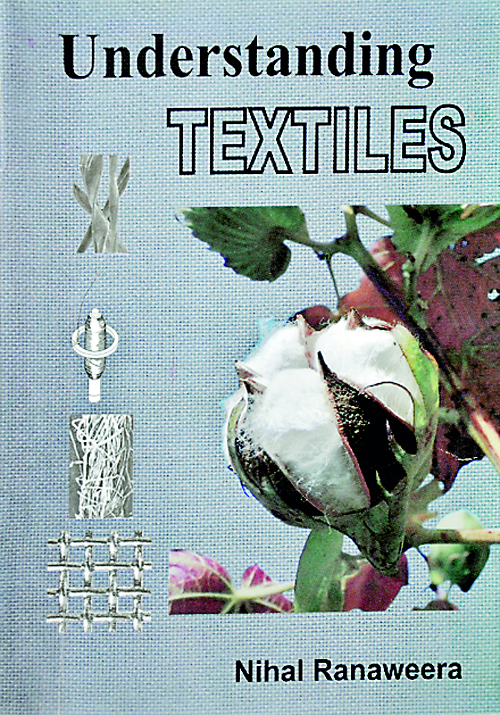Layer by layer: The A-Z of textiles
View(s):How do you remove a blood stain from a garment? Do you know that eau d’cologne or aftershave lotion can help in dealing with stubborn curry or saffron stains?
In his informative book ‘Understanding Textiles’ Nihal Ranaweera provides a comprehensive account of the manufacture and usage of textiles. Starting from raw material to the finished product, Mr. Ranaweera’s interesting and vivid introduction to a subject that many may have only a cursory knowledge of is a pleasure to read.
Clothing is a vital aspect of people, a need almost as important as food in our lives. The first chapter of the book deals with fibres and their production starting from plants familiar to us like cotton and linen and jute to animal fibres like wool and mohair. The reader  gains a good understanding of production, properties and also of their qualities. The author explains the different types of fibres available details their conversion to yarn and the process of the conversion of yarn to fabric. Mr. Ranaweera mentions that his aim in writing this book is to ensure that even a ‘layman is able to understand without going into technical details’. He also wishes to see it translated into Sinhala.
gains a good understanding of production, properties and also of their qualities. The author explains the different types of fibres available details their conversion to yarn and the process of the conversion of yarn to fabric. Mr. Ranaweera mentions that his aim in writing this book is to ensure that even a ‘layman is able to understand without going into technical details’. He also wishes to see it translated into Sinhala.
Textile processing covers a wide range and the author discusses the process and technology used. The book also refers to the process of taking care of clothes — ironing, hot-pressing or applying soaps and detergents. The common problem of stains and how to remove them is also addressed with the author offering options on how to tackle the problem.
Another chapter deals with the selection of fabrics for a particular use.
Mr. Ranaweera is well qualified to write this book, having over 40 years of experience in the field. He started out as a young trainee at the National Textile Corporation in 1968 where was assigned to the Veyangoda Textile Mills. On a scholarship offered by the Colombo Plan, he continued his education in Britain and later re-joined the Veyangoda Mills where he worked until his retirement in 1999. He worked for the Imperial Chemical Industries (ICI) during his time abroad.
He continued his education at Master’s level at the University of Bradford, furthering his knowledge in the industry which allowed him to embark on this book. Mr. Ranaweera’s vast knowledge of the subject is evident throughout the course of the book as he dives in to a broad range of areas providing technical detail in an easily assimilable manner. The use of images and charts aid the reader in identifying the concepts and tools used in describing certain aspects. However, a more careful proof reading of the content would have served to weed out some of the typographical errors that have crept in.
The book can be utilised as a quick reference guide to the usage of textiles to those studying the subject. The use of non-technical terms allows the reader to grasp the subject and avoid confusion.
Mr. Ranaweera aims to foster an interest in the textile industry and those in the garment sector will find this book a valuable resource.
| Book facts
‘Understanding Textiles’ by Nihal Ranaweera. Published by A.S. Printers. Reviewed |


